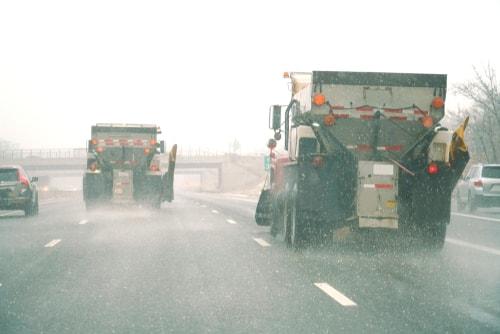 According to the calendar, winter is still two weeks away, but many parts of the country have already experienced snowfalls. With winter weather, of course, comes the danger of snow and ice on the roadways. Local municipalities often struggle to keep the roads clear for safe travel. At the state level, the Connecticut Department of Transportation (CTDOT) is responsible for clearing state highways and interstates. Unfortunately, however, accidents are not uncommon when roads are covered by snow or ice. Under Connecticut law, it is possible to take legal action against CTDOT for negligence, but a ruling by the state Supreme Court recently limited how far the Department’s liability extends.
According to the calendar, winter is still two weeks away, but many parts of the country have already experienced snowfalls. With winter weather, of course, comes the danger of snow and ice on the roadways. Local municipalities often struggle to keep the roads clear for safe travel. At the state level, the Connecticut Department of Transportation (CTDOT) is responsible for clearing state highways and interstates. Unfortunately, however, accidents are not uncommon when roads are covered by snow or ice. Under Connecticut law, it is possible to take legal action against CTDOT for negligence, but a ruling by the state Supreme Court recently limited how far the Department’s liability extends.
In 2011, a man was seriously hurt in an early-morning accident on the Gold Star Memorial Bridge between New London and Groton. The pickup truck he was driving slid on ice, rolled, and crashed into the structure of the bridge. The man’s accident was just one of many that day.
Court records indicate that the state police had started making calls to CTDOT an hour before the man’s crash, requesting a salt truck from the department’s fleet. With the salt truck still about an hour away, the state police did not shut down the bridge until later that morning—after the man was injured.
The man filed suit against the Department of Transportation alleging that the agency was negligent in its duties to keep the highway safe for travel. Part of his claim included allegations that the state police should have closed down the bridge until the salt truck could arrive.
Last month, the Connecticut Supreme Court took on part of the man’s case—specifically the portion dealing with actions of the state police. In a 4-3 decision, the high court ruled that while a motorist may sue CTDOT—namely, its commissioner—for alleged negligence in maintaining a road, the department cannot be held liable for the actions of the police who patrol the roads.
The law says that the transportation commissioner can be sued if a motorist’s injuries occurred on a bridge or highway as the results of “neglect or default of the state or any of its employees.” Previous cases have interpreted the latter part of that phrase rather broadly. In this case, the Supreme Court determined that the state employee must be involved with maintaining roadways and must have a connection with the transportation commissioner’s duties in order for the legal action to be appropriate. In the case at hand, the court ruled, the state police did not have such a connection.
The decision only affected the portion of the case dealing with the state police. The remainder of the case against CTDOT is pending.
The majority opinion held that allowing the action to continue against the transportation commissioner for the actions of the state police would increase the scope of the commissioner’s liability beyond what is reasonable. The commissioner could potentially be held liable for any actions by any employee of the state, even if the employee had no affiliation whatsoever with CTDOT.
On the other side, however, three justices wrote a dissenting opinion. They expressed that the language of the law was intended to hold negligent state employees liable for dangerous highways, whether the employee works for CTDOT or not. The dissenting justices wrote that the court’s decision has limited the rights of those injured on state highways “in a way the legislature did not intend.”
Filing an injury claim against a government entity can be difficult and complex, but an East Hartford personal injury lawyer can help. If you or a loved one has been injured as the result of negligence by a government employee, call 860-290-8690 for a free consultation at Woolf & Ross Law Firm, LLC today.
Sources:
https://www.courant.com/news/connecticut/hc-news-supremes-bridge-liability-20181116-story.html
https://www.jud.ct.gov/external/supapp/Cases/AROcr/CR330/330CR62.pdf
 50 Founders Plaza
50 Founders Plaza

